

Low Carbon Digital Cookbook
低碳食谱
Explore a variety of low carbon recipes developed by UK-based East and Southeast Asians in collaboration with data and climate scientists, acclaimed chefs, and food writers from East and Southeast Asian backgrounds. Gain insight into the carbon footprint of our food system by examining ingredients, cooking techniques, and food sourcing. Try cooking the dishes at home while reflecting on the climate impact of your own culinary practices. The Low Carbon Digital Cookbook is part of Low Carbon Chinatown, a project by artist & designer Ling Tan.
Low Carbon Mapo Tofu By Neil Eakapong
低碳麻婆豆腐
Low Carbon Mapo Tofu
A low carbon take on the classic Sichuan dish, bold, spicy, and comforting.
Servings | 多少份: 2-4 people
Recipe's Carbon Footprint Impact | 食谱的碳足迹影响
与传统食谱相比,每份的碳足迹:
Traditional Chicken Rice
Traditional Mapo Tofu
Traditional Sweet & Sour Pork
Low Carbon Chicken Rice
Traditional Wonton Dumpling Soup
Low Carbon Sweet & Sour 'Pork'
Low Carbon Mapo Tofu
Low Carbon Wonton Dumpling Soup
Traditional Salt & Pepper Prawns
Low Carbon Salt & Pepper Prawns
Low Carbon Autumn Sweet & Sour 'Pork'
Example of a traditional mapo tofu recipe - Link
Key Ingredients | 关键成分




mustard seed and coriander seed instead 1/4 tsp each



Key Steps | 关键步骤
Cut tofu into cubes. If using silken tofu, blanch gently in simmering water for 2 minutes and drain to firm it up.
Heat 2.5 tablespoon of oil in a wok or pan over medium heat.

Add Mustard seeds and coridander seeds and toast for about 30 seconds until fragrant.
Add ginger, garlic, and the white parts of the spring onion. Stir-fry for 1 minute.
Stir in doubanjiang (chili bean paste) and cook for 30–60 seconds until the oil turns red and fragrant.


Add the chopped button mushrooms. Stir-fry for 3–4 minutes until they soften and release moisture.
Add soy sauce, rice vinegar, sugar, and a splash of water or veggie stock. Stir to combine.
If you’d like a thicker sauce, mix 1/2 tsp of cornstarch with 1 tbsp of water, and stir it in. Let simmer for another minute.
Taste and adjust seasoning with salt if necessary.
Garnish with the green parts of the spring onion and an optional extra sprinkle of Sichuan peppercorns for more flavor.
Ingredients Or Steps That Might Incur Lower Carbon Footprint
可能导致较低碳足迹的成分或步骤

Made in UK
英国制造

Home Grown 自产自销 / Local Produce 本地产品/ Made in London 伦敦制造
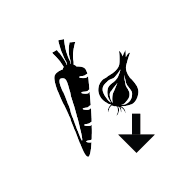
Original ingredient but reduced amount
原始成分但减少量

New Ingredient
新成分

Use Electricity
使用电器

New step with lower carbon footprint 能够降低碳足迹的步骤
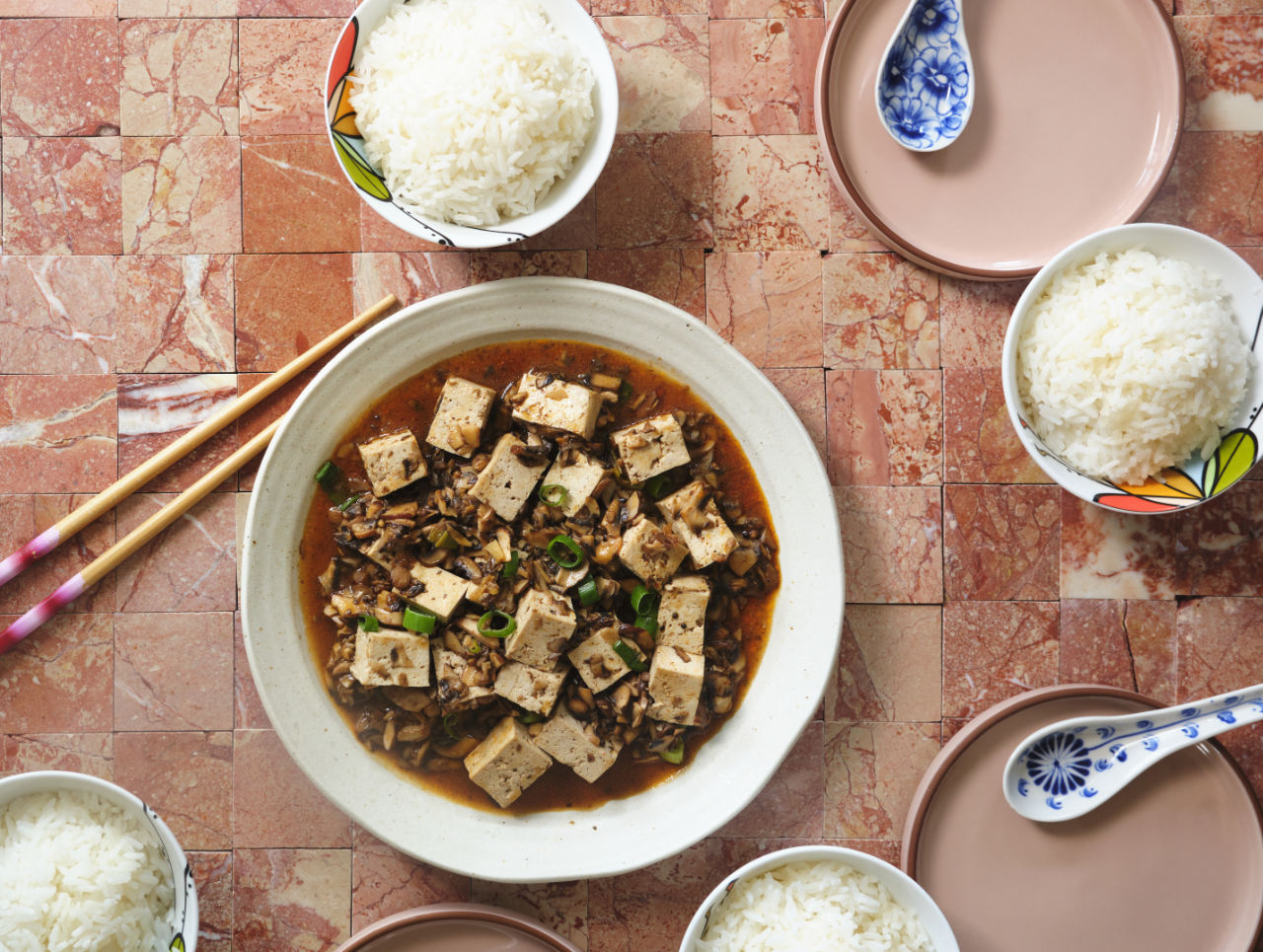










– Food photography by Uyen Luu and styling by Sam Wong –

Neil Eakapong, a Thai-born chef, began his career in architecture and fashion before embracing his lifelong passion for food. Inspired by his grandmother’s cooking, he launched Bangkok Delivery Boy, hosting supper clubs and private dining before training professionally at The Begging Bowl in Peckham. Now, he blends authentic Thai flavors with a growing focus on sustainable, plant-based cooking. Neil’s food celebrates memory, community, and joy—always aiming to nourish both people and the planet.
Low Carbon Chicken Rice By MiMi Aye
低碳鸡饭
Low Carbon Chicken Rice
"Chicken thighs are a good choice, because they are basically a by-product of the more popular chicken breast which means less waste (they’re also cheaper for the same reason). Thighs also cook more evenly and quickly than whole chickens. Some of the ingredients can be home grown, e.g ginger and spring onions"
Servings | 多少份: 4 people
Taste | 味道: "It tastes exactly like the traditional dish! | 味道和传统菜一模一样!"
Recipe's Carbon Footprint Impact | 食谱的碳足迹影响
与传统食谱相比,每份的碳足迹:
Traditional Chicken Rice
Traditional Mapo Tofu
Traditional Sweet & Sour Pork
Low Carbon Chicken Rice
Traditional Wonton Dumpling Soup
Low Carbon Sweet & Sour 'Pork'
Low Carbon Mapo Tofu
Low Carbon Wonton Dumpling Soup
Traditional Salt & Pepper Prawns
Low Carbon Salt & Pepper Prawns
Low Carbon Autumn Sweet & Sour 'Pork'
Example of a traditional chicken rice recipe - Link
Key Ingredients | 关键成分
8 small or 4 large chicken thighs (about 1 kg), with skin and bone




The reserved chicken trimmings




6 long red chillies, roughly chopped



22. 2 spring onions, whole, trimmed and finely chopped



Key Steps | 关键步骤











Ingredients Or Steps That Might Incur Lower Carbon Footprint
可能导致较低碳足迹的成分或步骤

Made in UK
英国制造

Home Grown 自产自销 / Local Produce 本地产品/ Made in London 伦敦制造

Original ingredient but reduced amount
原始成分但减少量

New Ingredient
新成分

Use Electricity
使用电器

New step with lower carbon footprint 能够降低碳足迹的步骤













– Food photography by Uyen Luu and styling by Sam Dixon –
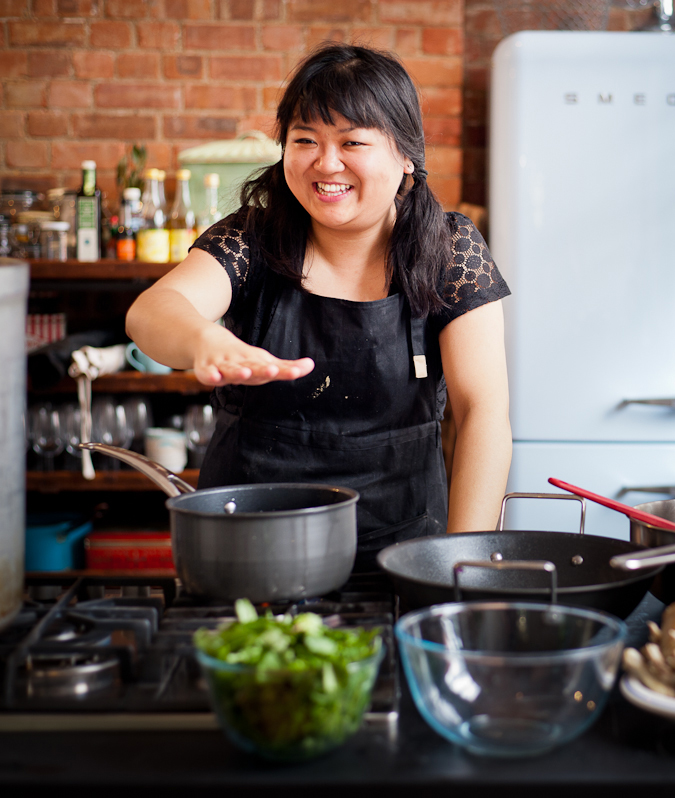
British-born to Burmese parents, chef and writer MiMi Aye is well-used to adapting recipes and dishes to give a taste of her motherland Myanmar (formerly Burma) using whatever techniques and ingredients are available. Her award-winning book ‘MANDALAY: Recipes & Tales from a Burmese Kitchen’ was chosen by The Observer, The Financial Times, The Mail on Sunday and Nigella Lawson as one of their Best Books of 2019. With bylines in TIME, The Guardian and The Independent.
Low Carbon Sweet & Sour Pork By Uyen Luu
低碳咕噜肉
Low Carbon Sweet & Sour Pork
"I will do cauliflower instead as pork has such a high foot print and usually when I make this, no one misses the pork."
Servings | 多少份: 2–4 people
Taste | 味道: "It tastes exactly like the traditional dish! | 味道和传统菜一模一样!"
Recipe's Carbon Footprint Impact | 食谱的碳足迹影响
与传统食谱相比,每份的碳足迹:
Traditional Chicken Rice
Traditional Mapo Tofu
Traditional Sweet & Sour Pork
Low Carbon Chicken Rice
Traditional Wonton Dumpling Soup
Low Carbon Sweet & Sour 'Pork'
Low Carbon Mapo Tofu
Low Carbon Wonton Dumpling Soup
Traditional Salt & Pepper Prawns
Low Carbon Salt & Pepper Prawns
Low Carbon Autumn Sweet & Sour 'Pork'
Example of a traditional sweet & sour pork recipe - Link
Key Ingredients | 关键成分
1 tablespoon light soy sauce




2 tablespoons cider vinegar





2 free range eggs, beaten in a shallow bowl









2 spring onions (scallions), sliced
Key Steps | 关键步骤




Ingredients Or Steps That Might Incur Lower Carbon Footprint
可能导致较低碳足迹的成分或步骤

Made in UK
英国制造

Home Grown 自产自销 / Local Produce 本地产品/ Made in London 伦敦制造

Original ingredient but reduced amount
原始成分但减少量

New Ingredient
新成分

Use Electricity
使用电器

New step with lower carbon footprint 能够降低碳足迹的步骤













– Food photography by Uyen Luu and styling by Sam Dixon –

Uyen Luu is a Vietnamese food writer, photographer and author of `Vietnamese: Simple Vietnamese Food To Cook At Home” (published by Hardie Grant) and “My Vietnamese Kitchen”. Uyen is also a food photographer.
Low Carbon Autumn Sweet & Sour 'Pork' By Uyen Luu
低碳秋季咕噜肉
Low Carbon Autumn Sweet & Sour 'Pork'
A recipe crafted for autumn, highlighting the rich, seasonal produce available across the UK and Europe during this time of year.
Servings | 多少份: 2–4 people
Recipe's Carbon Footprint Impact | 食谱的碳足迹影响
与传统食谱相比,每份的碳足迹:
Traditional Chicken Rice
Traditional Mapo Tofu
Traditional Sweet & Sour Pork
Low Carbon Chicken Rice
Traditional Wonton Dumpling Soup
Low Carbon Sweet & Sour 'Pork'
Low Carbon Mapo Tofu
Low Carbon Wonton Dumpling Soup
Traditional Salt & Pepper Prawns
Low Carbon Salt & Pepper Prawns
Low Carbon Autumn Sweet & Sour 'Pork'
Example of a traditional sweet & sour pork recipe - Link
Key Ingredients | 关键成分
1 tablespoon light soy sauce


2 tablespoons cider vinegar



1 tablespoon rapeseed oil









100 g cornflour plus more for dusting
2 spring onions (scallions), sliced

Key Steps | 关键步骤


Ingredients Or Steps That Might Incur Lower Carbon Footprint
可能导致较低碳足迹的成分或步骤

Made in UK
英国制造

Home Grown 自产自销 / Local Produce 本地产品/ Made in London 伦敦制造

Original ingredient but reduced amount
原始成分但减少量

New Ingredient
新成分

Use Electricity
使用电器

New step with lower carbon footprint 能够降低碳足迹的步骤









– Food photography by Uyen Luu and styling by Sam Wong –

Uyen Luu is a Vietnamese food writer, photographer and author of `Vietnamese: Simple Vietnamese Food To Cook At Home” (published by Hardie Grant) and “My Vietnamese Kitchen”. Uyen is also a food photographer.
Low Carbon Wonton Dumpling Soup by Shu Han Lee
低碳馄饨汤
Low Carbon Wonton Dumpling Soup
"Instead of usual pork and prawn, we use a vegan filling of tofu, leek and carrot. Tofu’s a super versatile ingredient and takes on flavour like a sponge. Leek, when stir fried first, gives us savoury depth and aroma. Carrot gives us the sweetness and colour you would normally get from prawns. We also use UK made wonton wrappers rather than imported wrappers."
Servings | 多少份: 8 (assuming 5 wontons each!)
Taste | 味道: "It tastes exactly like the traditional dish! | 味道和传统菜一模一样!"
Recipe's Carbon Footprint Impact | 食谱的碳足迹影响
与传统食谱相比,每份的碳足迹:
Traditional Chicken Rice
Traditional Mapo Tofu
Traditional Sweet & Sour Pork
Low Carbon Chicken Rice
Traditional Wonton Dumpling Soup
Low Carbon Sweet & Sour 'Pork'
Low Carbon Mapo Tofu
Low Carbon Wonton Dumpling Soup
Traditional Salt & Pepper Prawns
Low Carbon Salt & Pepper Prawns
Low Carbon Autumn Sweet & Sour 'Pork'
Example of a traditional wonton dumpling soup recipe - Link
Key Ingredients | 关键成分

200g block of firm tofu






1 L chicken stock (homemade, or use 2 Knorr stock pots and 1L water)

Key Steps | 关键步骤




Ingredients Or Steps That Might Incur Lower Carbon Footprint
可能导致较低碳足迹的成分或步骤

Made in UK
英国制造

Home Grown 自产自销 / Local Produce 本地产品/ Made in London 伦敦制造

Original ingredient but reduced amount
原始成分但减少量

New Ingredient
新成分

Use Electricity
使用电器

New step with lower carbon footprint 能够降低碳足迹的步骤













– Food photography by Uyen Luu and styling by Sam Dixon –
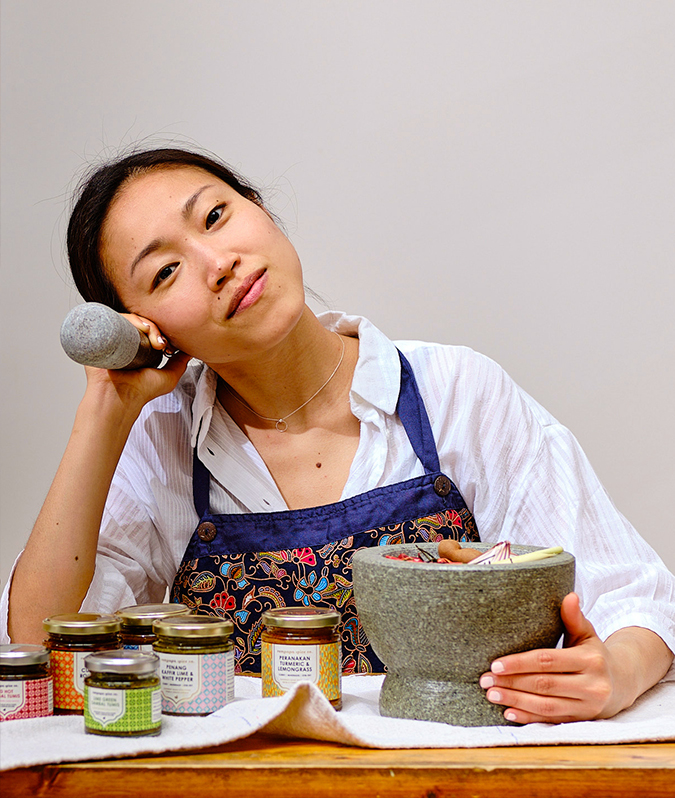
Shu Han is Hokkien Chinese in heritage, born and raised in food-obsessed Singapore. She moved to the UK twelve years ago and found herself missing the flavours of home. That was the start of her food journey, as she learnt to cook the food she grew up with, often using British seasonal ingredients. Shu has since written a cookbook 'Chicken & Rice: Southeast Asian Recipes from a London Kitchen' (Fig Tree, Penguin Books) and founded @rempapaspiceco, bringing Southeast Asian spice pastes to home kitchens everywhere.
Low Carbon Home Made Ketchup
By Hackney's Gainsborough Primary School
低碳自製番茄醬
Low Carbon Home Made Ketchup
Homemade ketchup crafted by Gainsborough Primary pupils, using Hackney-grown tomatoes for a tasty, low-carbon alternative. Using recipe from alphafoodie.com.
Servings | 多少份: 12
Key Ingredients | 关键成分




Key Steps | 关键步骤

Ingredients Or Steps That Might Incur Lower Carbon Footprint
可能导致较低碳足迹的成分或步骤

Made in UK
英国制造

Home Grown 自产自销 / Local Produce 本地产品/ Made in London 伦敦制造

Original ingredient but reduced amount
原始成分但减少量

New Ingredient
新成分

Use Electricity
使用电器

New step with lower carbon footprint 能够降低碳足迹的步骤

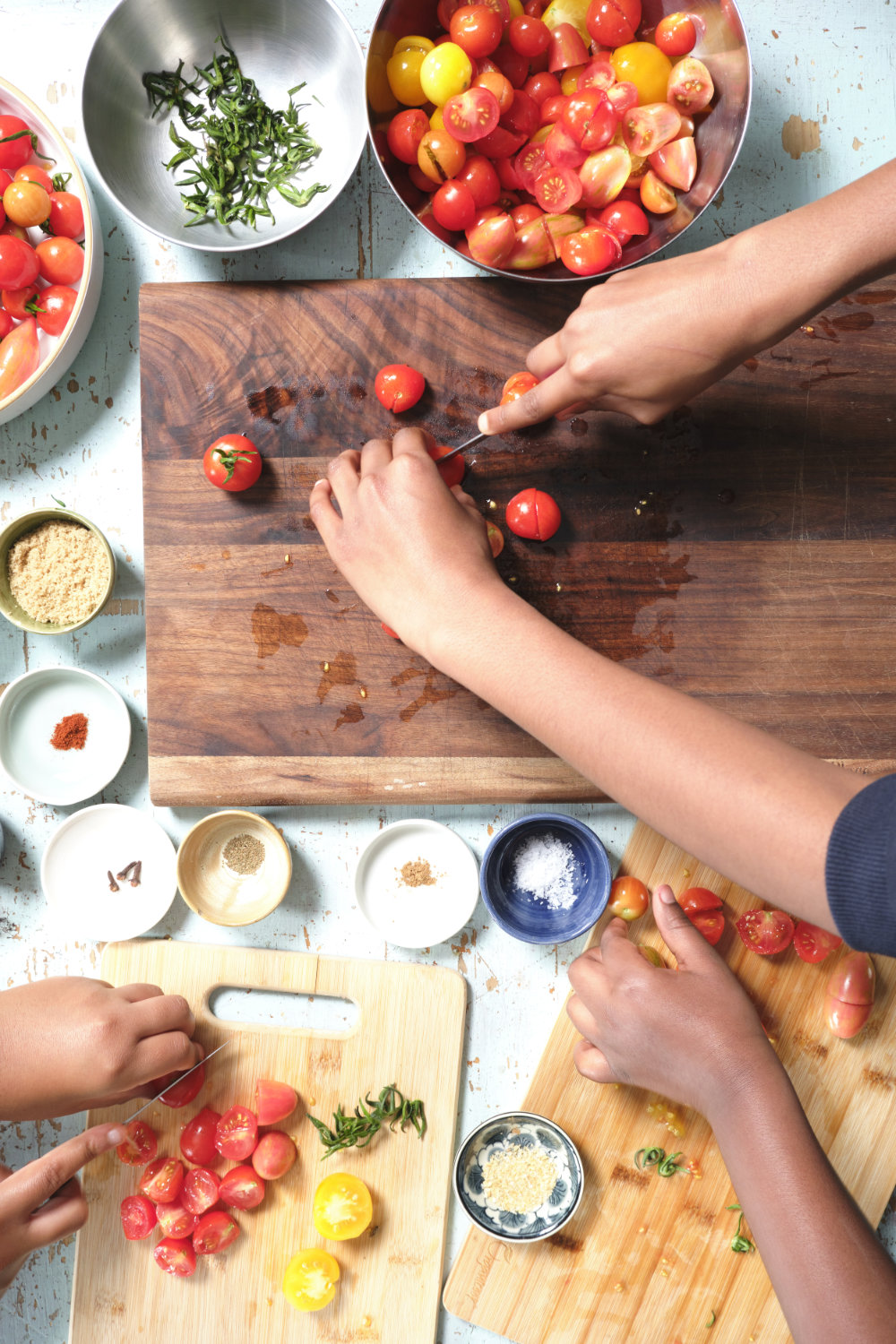







– Food photography by Uyen Luu and styling by Sam Wong –

Gainsborough Primary School in Hackney is a forward-looking and community-oriented school that embeds sustainability and student agency into its curriculum and extra-curricular life. Their Green Ambassadors and Campaign Curriculum encourage students to think about environmental issues, through activities such as herb tasting, to participating in growing local produce and making low carbon food. Low Carbon Home Made Ketchup is made by the students, supported by Teachers Rab Brownell & Debby.
Low Carbon Home Made Pickled Cucumber
By Hackney's Gainsborough Primary School
低碳自製醃黃瓜
Low Carbon Home Made Pickled Cucumber
Home made pickled cucumber crafted by Gainsborough Primary pupils, using Hackney-grown cucumbers for a tasty, low-carbon alternative. Recipe by Teacher Rab Brownell.
Servings | 多少份: 24
Key Ingredients | 关键成分




Key Steps | 关键步骤
Ingredients Or Steps That Might Incur Lower Carbon Footprint
可能导致较低碳足迹的成分或步骤

Made in UK
英国制造

Home Grown 自产自销 / Local Produce 本地产品/ Made in London 伦敦制造

Original ingredient but reduced amount
原始成分但减少量

New Ingredient
新成分

Use Electricity
使用电器

New step with lower carbon footprint 能够降低碳足迹的步骤





– Food photography by Uyen Luu and styling by Sam Wong –
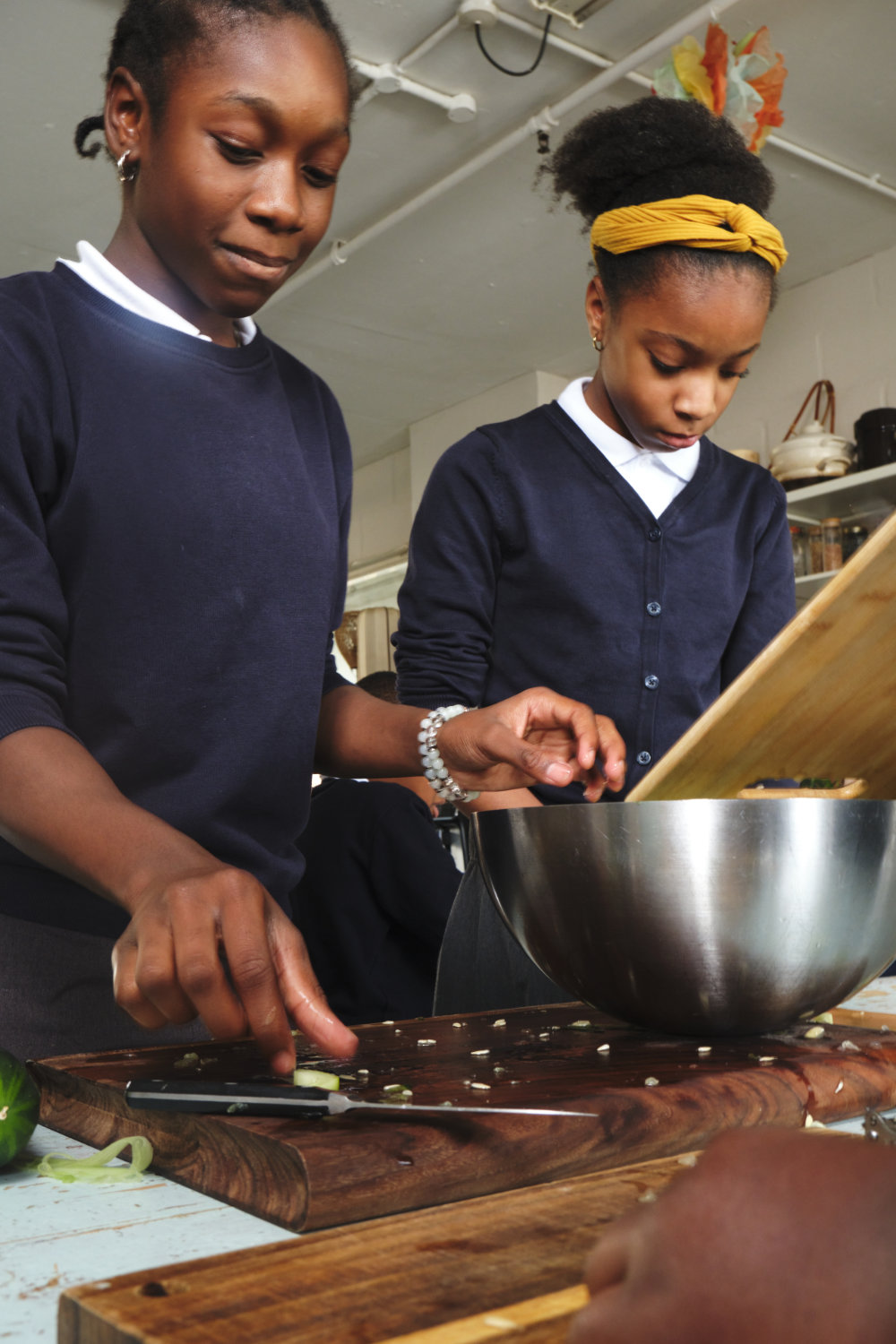
Gainsborough Primary School in Hackney is a forward-looking and community-oriented school that embeds sustainability and student agency into its curriculum and extra-curricular life. Their Green Ambassadors and Campaign Curriculum encourage students to think about environmental issues, through activities such as herb tasting, to participating in growing local produce and making low carbon food. Low Carbon Home Made Ketchup is made by the students, supported by Teacher Debby and Rab
Low Carbon Salt & Pepper 'Prawns'
By Leeds' East & Southeast Asian Community Members
低碳椒盐虾
Four short cooking-documentary films were developed as part of a Low Carbon Chinatown residency carried out in Leeds (UK) in 2023. The films follow 4 Leeds residents, a 79-year-old immigrant from Hong Kong, a 41-year-old immigrant from China, a 25-year-old university student from China, and a 18-year-old high school student from Hong Kong into their own home environments, where they each cook their own version of a low carbon Salt and Pepper ‘Prawns’ dish in their own kitchen, and talk about their experience living in the UK and their relationship to climate change. The films invite the audience to examine how different age, background, heritage, and life experience affects the way people cook food at home and in tackling the climate crisis.
Low Carbon Salt & Pepper Prawns by Bei Gao
低碳椒盐虾
Low Carbon Salt & Pepper Prawns
Servings | 多少份: 3
Recipe's Carbon Footprint Impact | 食谱的碳足迹影响
与传统食谱相比,每份的碳足迹:
Traditional Chicken Rice
Traditional Mapo Tofu
Traditional Sweet & Sour Pork
Low Carbon Chicken Rice
Traditional Wonton Dumpling Soup
Low Carbon Sweet & Sour 'Pork'
Low Carbon Mapo Tofu
Low Carbon Wonton Dumpling Soup
Traditional Salt & Pepper Prawns
Low Carbon Salt & Pepper Prawns
Low Carbon Autumn Sweet & Sour 'Pork'
Example of a traditional salt and pepper prawns - Link
Key Ingredients | 关键成分








Key Steps | 关键步骤






Ingredients Or Steps That Might Incur Lower Carbon Footprint
可能导致较低碳足迹的成分或步骤

Made in UK
英国制造

Home Grown 自产自销 / Local Produce 本地产品/ Made in London 伦敦制造

Original ingredient but reduced amount
原始成分但减少量

New Ingredient
新成分

Use Electricity
使用电器

New step with lower carbon footprint 能够降低碳足迹的步骤









– Photography by Rachel Bunce –

Bei Gao is an active Community Leader with over 7 years of experience within local charities working with new arrivals and settled communities, and over 10 years within the legal sector. She works with adults and children from diverse backgrounds, and regularly organizes cultural events and projects. She loves artistic performances and leads activities within Mafwa Theatre and in the wider community. Bei engages with people through art, language, and culture to promote togetherness.
Low Carbon Salt & Pepper Prawns by Man Chiu Leong
低碳椒盐虾
Low Carbon Salt & Pepper Prawns
Servings | 多少份: 2
Recipe's Carbon Footprint Impact | 食谱的碳足迹影响
与传统食谱相比,每份的碳足迹:
Traditional Chicken Rice
Traditional Mapo Tofu
Traditional Sweet & Sour Pork
Low Carbon Chicken Rice
Traditional Wonton Dumpling Soup
Low Carbon Sweet & Sour 'Pork'
Low Carbon Mapo Tofu
Low Carbon Wonton Dumpling Soup
Traditional Salt & Pepper Prawns
Low Carbon Salt & Pepper Prawns
Low Carbon Autumn Sweet & Sour 'Pork'
Example of a traditional salt and pepper prawns - Link
Key Ingredients | 关键成分









Key Steps | 关键步骤


Ingredients Or Steps That Might Incur Lower Carbon Footprint
可能导致较低碳足迹的成分或步骤

Made in UK
英国制造

Home Grown 自产自销 / Local Produce 本地产品/ Made in London 伦敦制造

Original ingredient but reduced amount
原始成分但减少量

New Ingredient
新成分

Use Electricity
使用电器

New step with lower carbon footprint 能够降低碳足迹的步骤








– Photography by Rachel Bunce –

Mr Man Chiu Leong is a 79 year-old retiree living in Leeds for many decades. A first-generation immigrant from Hong Kong, he has worked across textile, manufacturing, food hygience and many other sectors in the UK. He is now an active member of the Leeds Chinese community, having founded Lychee Red Chinese Seniors and is also working as a community chef among many other hobbies.
Low Carbon Salt & Pepper Prawns by HaoJin Wang
低碳椒盐虾
Low Carbon Salt & Pepper Prawns
"Salt and Pepper Mushroom is a common dish found in my hometown in northern China. Sometimes compare with meat, we would prefer to order this dish in restaurant as it taste like meat and it contains many vitamins."
Servings | 多少份: 2
Taste | 味道: "This dish still taste like meat and contains many vitamins."
Recipe's Carbon Footprint Impact | 食谱的碳足迹影响
与传统食谱相比,每份的碳足迹:
Traditional Chicken Rice
Traditional Mapo Tofu
Traditional Sweet & Sour Pork
Low Carbon Chicken Rice
Traditional Wonton Dumpling Soup
Low Carbon Sweet & Sour 'Pork'
Low Carbon Mapo Tofu
Low Carbon Wonton Dumpling Soup
Traditional Salt & Pepper Prawns
Low Carbon Salt & Pepper Prawns
Low Carbon Autumn Sweet & Sour 'Pork'
Example of a traditional salt and pepper prawns - Link
Key Ingredients | 关键成分








Key Steps | 关键步骤


Ingredients Or Steps That Might Incur Lower Carbon Footprint
可能导致较低碳足迹的成分或步骤

Made in UK
英国制造

Home Grown 自产自销 / Local Produce 本地产品/ Made in London 伦敦制造

Original ingredient but reduced amount
原始成分但减少量

New Ingredient
新成分

Use Electricity
使用电器

New step with lower carbon footprint 能够降低碳足迹的步骤







– Photography by Rachel Bunce –

Haojin Wang is one of the participants from Low Carbon Chinatown Residency in Leeds. She is originally from ShanXi province Xi'An City in China, and came to study at the University of Leeds a few years ago, encouraged by her peers from China.
Low Carbon Salt & Pepper Prawns by Stephen Wong
低碳椒盐虾
Low Carbon Salt & Pepper Prawns
Servings | 多少份:"Varies between number but with an 9 inch pan it can feed up to 4 people"
Taste | 味道: "I would rate my dish 8 out of 10, it still got room for improvement, but overall, I still enjoy it, I would cook it again!"
Recipe's Carbon Footprint Impact | 食谱的碳足迹影响
与传统食谱相比,每份的碳足迹:
Traditional Chicken Rice
Traditional Mapo Tofu
Traditional Sweet & Sour Pork
Low Carbon Chicken Rice
Traditional Wonton Dumpling Soup
Low Carbon Sweet & Sour 'Pork'
Low Carbon Mapo Tofu
Low Carbon Wonton Dumpling Soup
Traditional Salt & Pepper Prawns
Low Carbon Salt & Pepper Prawns
Low Carbon Autumn Sweet & Sour 'Pork'
Example of a traditional salt and pepper prawns - Link
Key Ingredients | 关键成分



Key Steps | 关键步骤

Ingredients Or Steps That Might Incur Lower Carbon Footprint
可能导致较低碳足迹的成分或步骤

Made in UK
英国制造

Home Grown 自产自销 / Local Produce 本地产品/ Made in London 伦敦制造

Original ingredient but reduced amount
原始成分但减少量

New Ingredient
新成分

Use Electricity
使用电器

New step with lower carbon footprint 能够降低碳足迹的步骤





– Photography by Rachel Bunce –

Stephen Wong is a young college student who moved from Hong Kong to the UK with his family 3 years ago and currently lives in Leeds near his boarding school. He used to be part of the Youth Climate Action group in Leeds.

Low Carbon Chinatown is a project by Ling Tan, originally commissioned by Kakilang.
Leeds Low Carbon Chinatown is commissioned by Compass Festival.
Hackney’s Low Carbon Chinatown is supported by the Climate Team in Hackney Council and public funding by the National Lottery through Arts Council England.
With contributions from data scientist Raphael Leung, climate scientist Dr Alice Garvey, climate economist Catherine Chong, food writers MiMi Aye, Uyen Luu and Shu Han Lee, chef Neil Eakapong, designer Usman Haque, production support Nick Murray, Holly Gibbs & Jennie Gilman, fabricator Gary Campbell and Studio Makecreate, structural engineer Atelier One, community film participants Man Chiu Leong, Bei Gao, Haojin Wang & Stephen Wong.
With support from Arts Council England, Compass Festival, Manchester Museum, Barking Riverside, Royal Docks, Growing Communities, Gainsborough Primary School and MadLeap. With community support from London Chinese Community Centre, Hackney Chinese Community Centre, Newham Chinese Association, Mafwa Theatre, Lincoln Greeners, Lychee Red Chinese Seniors & Gainsborough Primary School.
